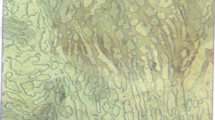Abstract
Duplex stainless steel (DSS) UNS S32205 presents high resistance to oxidation, corrosion, and corrosion under stress associated with good mechanical properties, thus being widely used in oil exploration and chemical treatment systems. Due to these characteristics, studies on surface quality are justified in the machining of such materials. In this work, dry machining end-milling tests were performed with positive geometry cutting tools (coated carbide inserts with tip radius of 0.4 mm) with different cutting parameters. Each cutting parameter was evaluated in three levels, combined through Box-Behnken Design of experiments (BBD): cutting speed (30, 45, 60 m/min), feed per tooth (0.05, 0.1, 0.15 mm/tooth), and depth of cut (0.2, 0.4, 0.6 mm). Two surface roughness parameters (Ra and Rz) were measured in the machined surfaces under different cutting combinations. Roughness profiles were analyzed for the highest and lowest measured values of surface roughness, and Abbott-Firestone Curve (AFC) and amplitude-probability distribution (APD) represented its statistical profile. In this way, appropriate combination of cutting parameters for minimum Ra and Rz parameters obtained after finishing end-milling of UNS S32205 were determined, as well as AFC and APD of these values, thus allowing the characterization of the performance of tool-workpiece pair in DSS cutting, resulting in Ra and Rz values of 0.182 and 1.302 μm, respectively. Low surface roughness values were validated using BBD, representation of the statistical profile, and optimization of cutting parameters improved the little bibliographical material in DSS milling.
Similar content being viewed by others
References
Benardos PG, Vosniakos G-C (2003) Predicting surface roughness in machining: a review. Int J Mach Tools Manuf 43(8):833–844. https://doi.org/10.1016/S0890-6955(03)00059-2
Bordinassi EC (2006) Contribution to the study of the surface integrity of a super duplex stainless steel after machining. 221 f. PhD Thesis, Mechanical Engineering, POLI-USP, São Paulo, SP, Brasil (in Portuguese). https://doi.org/10.11606/T.3.2006.tde-22042007-135903
Cabrera J (2003) Hot deformation of duplex stainless steels. J Mater Process Technol 143-144:321–325. https://doi.org/10.1016/S0924-0136(03)00434-5
Ferreira SLC, Bruns RE, Silva EGP, Santos WNL, Quintella CM, David JM, Andrade JB, Breitkreitz MC, Jardim ICSF, Neto BB (2007) Statistical designs and response surface techniques for the optimization of chromatographic systems. J Chromatogr A 1158(1–2):2–14. https://doi.org/10.1016/j.chroma.2007.03.051
Gouveia RM, Silva FJG, Reis P, Baptista APM (2016) Machining duplex stainless steel: comparative study regarding end mill coated tools. Coatings 6(4):6–30. https://doi.org/10.3390/coatings6040051
Gunn RN (1997) Duplex stainless steel: microstructure, properties and applications. Woodhead Publishing, Cambridge 216p. http://www.sciencedirect.com/science/book/9781855733183
IMOA (2014) Practical guidelines for the fabrication of duplex stainless steels, 3rd edn. International Molybdenum Association, Pittsburgh TMR Stainless, 48p. http://www.imoa.info/download_files/stainless-steel/Duplex_Stainless_Steel_3rd_Edition.pdf
Jebaraj AV, Ajaykumar L, Deepak CR, Aditya KVV (2017) Weldability, machinability and surfacing of commercial duplex stainless steel AISI2205 for marine applications—a recent review. J Adv Res 8(3):183–199. https://doi.org/10.1016/j.jare.2017.01.002
Klocke F (2011) Manufacturing processes 1—cutting. RWTH edition. Springer, 504p, Berlin-Heidelberg. https://doi.org/10.1007/978-3-642-11979-8
Korkut I, Kasap M, Ciftci I, Seker U (2004) Determination of optimum cutting parameters during machining of AISI 304 austenitic stainless steel. Mater Des 25(4):303–305. https://doi.org/10.1016/j.matdes.2003.10.011
M’Saoubi R, Outeiro JC, Changeux B, Lebrun JL, Dias AM (1999) Residual stress snalysis in orthogonal machining of standard and ressulfurized AISI 316L steels. J Mater Process Technol 96(1–3):225–233. https://doi.org/10.1016/S0924-0136(99)00359-3
Manohar M, Joseph J, Selvaraj T, Sivakumar D (2013) Application of Box Behnken design to optimize the parameters for turning Inconel 718 using coated carbide tools. Int J Sci Eng Res 4(4):620–642 https://www.ijser.org/researchpaper/Application-of-Box-Behnken-design-to-optimize-the-parameters-for-turning-Inconel-718-using-coated-carbide-tools.pdf
Pawlus P, Grabon W (2008) The method of truncation parameters measurement from material ratio curve. Precis Eng 32(4):342–347. https://doi.org/10.1016/j.precisioneng.2008.01.002
Petropoulos, P.G.N., Pandazaras, N.P., Davim, J.P. (2010) Surface texture characterization and evaluation related to machining. In: Davim, J. Paulo Surface integrity in machining. London: Springer, Cap 2, p. 37–66. https://doi.org/10.1007/978-1-84882-874-2_2
Philip SD, Chandramohan P, Rajesh PK (2015) Prediction of surface roughness in end milling operation of duplex stainless steel using response surface methodology. J Eng Sci Technol 10(3):340–352 http://jestec.taylors.edu.my/V10Issue3.htm
Raymundo EA, Ambrozin EW, Ribeiro RB, Toledo JVR, Souza JVC (2014) Análises dos cavacos gerados no processo de fresamento do aço inoxidável duplex UNS S31803 (SAF 2205) como recebido. Rev Gestão Tecnol 1(2):13–20. https://doi.org/10.24279/jmgmt.v2i1.141
Rousset NBS, Chaouachi MA, Chellouf A (1996) Role of surface finishing on pitting corrosion of a duplex stainless steel in sea water. J Mater Eng Perform 5(2):225–231. https://doi.org/10.1007/BF02650891
Shashanka R (2016) Fabrication of nano-structured duplex and ferritic stainless steel by planetary milling followed by consolidation. 194 f. PhD Thesis. Department of Metallurgical and Materials Engineering, NIT Rourkela, India, http://ethesis.nitrkl.ac.in/8043/
Tavares SMO (2005) Analysis of surface roughness and models of mechanical contacts. 134 f. MSc Dissertation. Facoltà di Ingegneria (Università di Pisa) / Faculdade de Engenharia (Universidade do Porto) https://paginas.fe.up.pt/~em00021/eramus/project_english.pdf
Acknowledgements
The authors thank Megaligas Co. for the donation of workpieces, Walter Tools for the donation of cutting tools, Foundry Laboratory (LAFUN-UFRGS) for the chemical analysis, and CAPES (grant 2017/1691358) for the student scholarship.
Author information
Authors and Affiliations
Corresponding author
Rights and permissions
About this article
Cite this article
Policena, M.R., Devitte, C., Fronza, G. et al. Surface roughness analysis in finishing end-milling of duplex stainless steel UNS S32205. Int J Adv Manuf Technol 98, 1617–1625 (2018). https://doi.org/10.1007/s00170-018-2356-4
Received:
Accepted:
Published:
Issue Date:
DOI: https://doi.org/10.1007/s00170-018-2356-4




